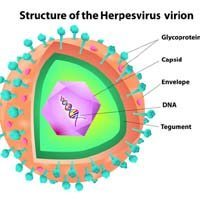Personalized Exercise Program Improves Mesothelioma Quality of Life
 A new case study suggests that a personalized exercise program could improve the quality of life for people fighting malignant mesothelioma.
A new case study suggests that a personalized exercise program could improve the quality of life for people fighting malignant mesothelioma.
An estimated 2,500 Americans receive a mesothelioma diagnosis every year. Most of them are over 65. This population is typically less active than younger people anyway. It can be even harder to get enough physical activity when they are depleted by cancer and treatment.
Research shows that physical activity does more than make patients stronger. It can also help them fight cancers like malignant mesothelioma. But many patients still do not get enough.
The new report shows how a custom exercise program can help mesothelioma patients feel and function better.
Physical Activity and Mesothelioma Treatment
Pleural mesothelioma is a lung-related cancer caused by asbestos. People with pleural mesothelioma may be short of breath, anxious, and fatigued. They may also feel weak or have digestive problems. Treatments like chemotherapy and radiation often make these symptoms even worse.
The American Lung Association says an exercise program can help. Physical activity boosts energy, lowers stress, improves self-esteem, stimulates appetite, and makes muscles stronger. It may also help with breathing and digestive problems.
The American Cancer Society says exercise can reduce treatment-associated nausea and prevent isolation.
An exercise program is so essential to cancer care that the Clinical Oncology Society of Australia (COSA) recommends it for all patients. COSA released a statement to that effect in 2018. It says exercise is “a safe and effective intervention to counteract the adverse physical and psychological effects of cancer and its treatment.”
COSA says mesothelioma patients should aim for at least 2.5 hours of moderate aerobic exercise every week. They should also have 2 to 3 moderate intensity resistance exercise sessions.
How a Personalized Exercise Program Can Help
The author of the new report says group programs for cancer patients are “often lacking appropriate intensity and volume.” As a result, patients make little improvement or even go backward in their physical well-being.
Andrew Chongaway, a Physical Therapist at Beaumont Health in Michigan, authored the new case study. It details the experience of a hospitalized mesothelioma patient. The patient had an individualized exercise program. It included isometric strength training (ISO) and high-intensity interval training (HIIT).
“The patient demonstrated improvement in functional mobility evidenced by improvement in Activity Measure for Post-Acute Care (AM-PAC) score through the hospitalization along with increased ambulation distance,” writes Chongaway.
The patient did not have any problems as a result of their increased physical activity.
The case for exercise is overwhelmingly positive. But mesothelioma patients should still talk with their oncologist before beginning an exercise program. Many hospitals now offer fitness classes for cancer patients and survivors.
Sources:
Chongaway, A, et al, “Utilization of Isometric Strength Training and Interval Training With a Patient With Cancer in the Acute Care Setting”, June 10, 2021, Cureus, eCollection, https://www.cureus.com/articles/55307-utilization-of-isometric-strength-training-and-interval-training-with-a-patient-with-cancer-in-the-acute-care-setting





